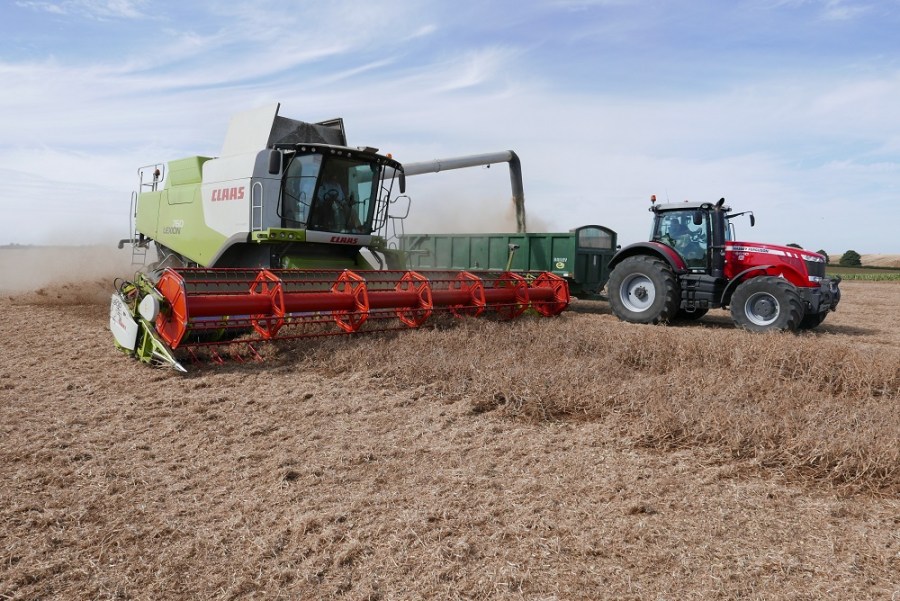No stranger to record yield attempts with cereal and oilseed crops, Tim Lamyman of Worlaby Farms, Lincs decided 2017 would be the year to aim for the world pea yield record, and he has not been disappointed.
Mr Lamyman has set a new world record yield for combining peas of 6.47 t/ha, at an average of 15.35% moisture with his 8.23ha crop of LG Stallion, large blue peas.
The last world record for combined peas in Europe was 5.21 t/ha from a crop in Ireland.
Harvested on the 25th August, the crop has performed well throughout the season as a result of a planned programme of targeted inputs and attention to detail.
Peas have not been grown on the Lamyman family farm for over 20 years since working with the South Wold vining pea group. The only other pulse’s currently grown on the farm are spring beans which fit into a seven year rotation.
Recently recommended large blue pea, LG Stallion was the field pea variety of choice, selected for its high yield potential. George Hunter, Limagrain pulse product manager points out that that the variety is the highest yielding large blue pea on the PGRO Recommended List, combined with good standing and downy mildew tolerance.
Aiming high
“The chosen field for the LG Stallion attempt was a grade 2 chalky loam free draining soil, offering the potential to develop well-structured root systems, enabling easier nutrient uptake,” explains Mr Lamyman.
“Previously, this particular field has produced record yields of winter wheat of 16.5 t/ha and oilseed rape of 6.7 t/ha.”
Cultivations
The field was ploughed, followed by two passes with a Lemkin Terradisc and then finished with a Vaderstat carrier (discs and crumble roller). Once satisfied with the seed bed, LG Stallion was drilled by a Vaderstat Rapid with the coulters set at a 4 inch row width.
“The seed was treated with Wakil XL + GPA; the aim of this being to get early downy mildew control from the Wakil XL and better root development as well as plant establishment with the phosphite-based nutrient GPA,” he says.
“Established plant populations were 85 plants per square metre.”
Nutrition
Mr Lamyman believes that detailed and well targeted crop nutrition has been critical to the crop’s success. “Leaf samples were taken at four different stages through the crop’s growth cycle in order to identify nutrient deficiencies to which the relevant products were then applied, as required.”
“Manganese deficiency is normally an issue with field peas, however, levels within the crop were adequate for most of the growing period. Probably because of the plant being better able to utilise available manganese in the soil as a result of other key nutrients being applied to the crop as required.”
As with other crops on the farm, the pea crop received foliar applications of zinc and calcium (Bionature UK Calflux) and an application of boron and molybdenum (UK Rainbow Wave) at early flower.
Mr Lamyman believes that Calflux is a key component in any record attempt, as when the plant experiences stress, it will draw calcium from the flowering nodes and this can lead to pods and flowers aborting.
“I have learnt a lot throughout this record attempt; nutrition of the crop is certainly key, and by making small tweaks to foliar and aphicide applications there is no reason to believe that we can’t push yields even higher next time.”
“However, as with any crop the weather is always going to play a vital part and we didn’t come off too badly this year as we drilled into moisture and have had rain when required; perhaps the only thing we were lacking was good levels of sunlight while the pods were filling.”




